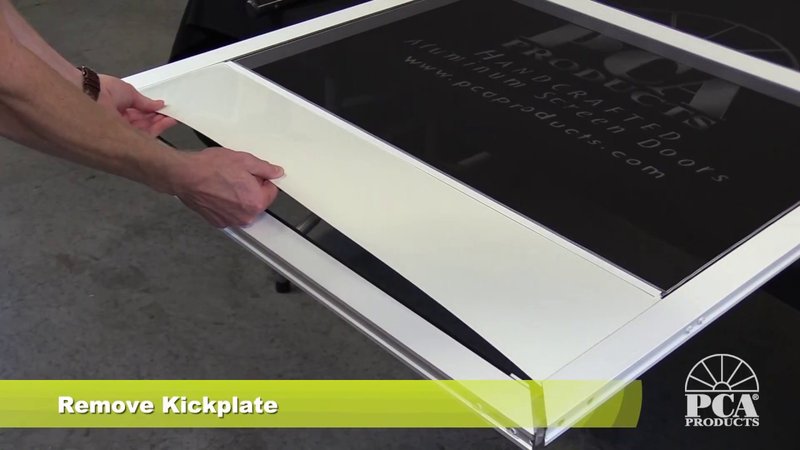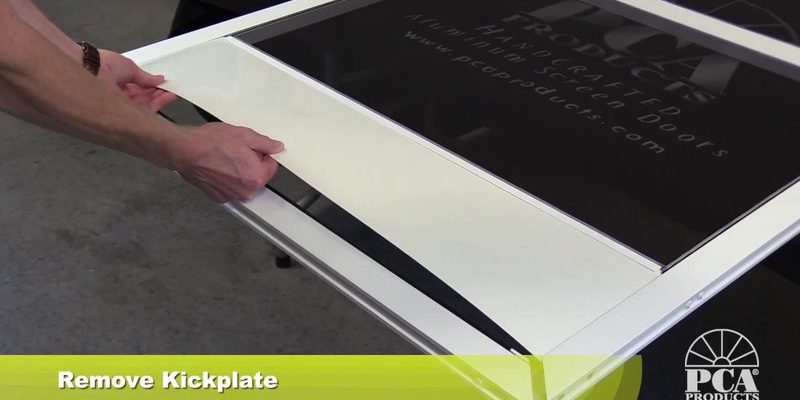
Here’s the thing: repairing a kick plate that’s denting a fiberglass door isn’t just about swapping out the metal. You have to think about what damage happened underneath, and how to keep it from coming back. Whether you’re dealing with a standard Schlage, Kwikset, or even a no-name brand, the process is mostly the same—and, yes, you can totally do it yourself if you take it slow.
Why Is My Kick Plate Damaging the Fiberglass Door?
Before you grab your tools, let me explain *why* this problem pops up. Fiberglass doors are tough and resist a lot of things—weather, warping, even basic scratches. But they aren’t invincible. The area where the kick plate meets the door is especially vulnerable. If the kick plate is installed too tightly, or if it’s made from a harder metal (like stainless steel), repeated impacts squeeze the metal against the fiberglass. Over time, pressure points form, causing dents or even cracks.
You might be wondering if this is bad luck or a sign of a cheap door. Honestly, most fiberglass doors—from big brands like Therma-Tru or Masonite to lesser-known models—are built pretty similarly in this area. A bad install or years of heavy use can make it worse, but almost any kick plate can cause issues if the fit and maintenance aren’t right.
Another thing to check: sometimes moisture gets between the kick plate and the door, softening the fiberglass over time. If you live somewhere humid or your door isn’t perfectly sealed, water can sneak in. That soft spot will dent even easier, and you may even see bubbling or warping around the problem area.
Signs You Need to Repair a Kick Plate Dent on a Fiberglass Door
How do you know when it’s time to act? Here are some signs that your kick plate is causing actual damage—not just minor scuffs:
- Visible indentations around the bottom of your door, especially in the pattern of the kick plate’s edges or screws
- Distorted door surface—the fiberglass looks wavy, pushed in, or cracked near the plate
- Loose or rattling kick plate that moves when you open, close, or press on the door
- Peeling paint or finish around the plate, which might mean the fiberglass is flexing
If you see any of these, act sooner rather than later. Waiting too long can mean a bigger repair, especially if moisture gets in or the dent grows. In some cases, the door may still open and close just fine, but small dents can turn into cracks, which are much trickier to fix.
Gathering Tools and Materials for the Repair
Let’s talk tools—no need for anything super fancy, but you want to have the right supplies to make this hassle-free. Here’s what you’ll need to repair a kick plate that’s denting a fiberglass door:
- Phillips and flathead screwdrivers to remove and reinstall the kick plate
- Plastic or wooden putty knife for gentle prying
- Fiberglass repair kit or two-part epoxy to fill dents
- Sandpaper (fine and medium grit) for smoothing the surface
- Paint or finish to match your door, if touchups are needed
- New kick plate (optional) if the old one is too bent or corroded
- Measuring tape and pencil for marking drill holes or alignment
You might be tempted to use metal putty knives or flat bars, but honestly, plastic or wood is safer for fiberglass. Other tools could scratch or gouge the surface, making the whole thing worse.
Step-by-Step: Fixing the Dent and Reinstalling the Kick Plate
Let’s get into the nitty-gritty of the repair process. If you’re new to home improvement, just go slow—think of it like following a recipe.
1. Remove the Kick Plate Carefully
Start by unscrewing or gently prying the kick plate from the door. Use a plastic putty knife to avoid scratching the fiberglass. If screws are rusted, apply a dab of penetrating oil and wait a few minutes. Once off, inspect both the kick plate and the door surface underneath.
2. Assess and Clean the Damaged Area
With the plate removed, clean the fiberglass surface with mild soap and water. Dry it thoroughly. Look for any cracks or punctures. If you see gunk, peeling paint, or bits of old adhesive, scrape them off gently.
3. Repair the Dent in the Fiberglass
Here’s the important part. Mix up your fiberglass repair kit or two-part epoxy according to the instructions. Using the putty knife, fill in the dent fully, pressing the compound into low spots. Smooth the surface as much as you can; you’ll sand it after it dries. For deeper damage, you may need to layer the compound, letting each layer set in between.
4. Sand and Paint for a Seamless Finish
Once the repair is dry (check your kit for recommended curing times), sand it down with medium, then fine-grit sandpaper. You want the surface flush with the rest of the door. Wipe off dust and apply paint or finish to match. Let it dry completely before continuing.
5. Reinstall the Kick Plate the Right Way
This is your chance to prevent future dents. If your old kick plate is warped, replace it with a new one. Consider adding a thin rubber or foam strip between the plate and the door before you screw it back on. This cushions impacts and reduces pressure points. Line up the plate evenly, mark new holes if needed, and fasten it without over-tightening. The plate should be snug, but not pressing hard into the fiberglass.
Tips to Prevent Kick Plate Damage in the Future
Here’s where you can save yourself trouble down the road. Simple tweaks can really make a difference.
- Add a buffer: A weather-resistant foam strip or silicone gasket acts like shock absorbers, taking the edge off bumps and kicks.
- Check screw tightness: Over-tightening is a common culprit. Just snug is good enough—don’t crank on the screwdriver.
- Choose the right material: Brass and aluminum kick plates are softer and less likely to dent fiberglass. Stainless steel is durable, but harder on the door.
- Keep it clean and dry: Wipe behind the plate every few months so moisture doesn’t get trapped. This keeps the fiberglass strong.
“A little prevention goes a long way. The right installation can outlast the door itself, if you cushion and check it once in a while.”
Should You Replace the Kick Plate or the Door—Or Both?
You might be wondering if it’s worth fixing the dent, or if your door’s days are numbered. Usually, a fiberglass door is tough enough to bounce back from minor dents with a repair kit. Kick plates are simple to replace, and sometimes swapping for a new one (with better padding) is all you need.
But, if the damage is *very* deep, spreading, or there are cracks running through the fiberglass, you may need to call in a pro—or budget for a replacement in the future. If you’re not sure, gently tap around the repair with your knuckle. If it feels solid and doesn’t flex, you’re probably fine. If it feels spongy or you hear a hollow sound, the underlying fiberglass might be compromised.
Think of it like patching a small hole in drywall versus rebuilding a whole wall. Most dents are patchable, but don’t throw good time after bad—if the door is truly failing, replacement makes more sense.
Comparing Kick Plate Materials and Mounting Styles
It’s easy to overlook, but not all kick plates are created equal. Here’s a quick breakdown:
| Material | Pros | Cons |
| Aluminum | Lightweight, soft, easy to install, won’t rust | Can dent easily, less durable to heavy impacts |
| Brass | Looks great, softest on fiberglass, corrosion-resistant | More expensive, can tarnish without upkeep |
| Stainless Steel | Super tough, modern look, weatherproof | Harder on doors, might dent fiberglass if not padded |
| Plastic | Won’t dent at all, cheap, flexible | May discolor, not as premium-looking |
You can also choose between adhesive-mounted (peel and stick) or screw-mounted plates. Adhesive-mount is gentler on fiberglass, but may not last as long with heavy boots or kids slamming the door. Screw-mounts are stronger, but need to be cushioned and not overtightened.
Final Thoughts on Fixing a Kick Plate Dent in a Fiberglass Door
Living with a dented kick plate—or worse, a dented fiberglass door—is no fun. But, with a little patience and the right approach, it’s totally fixable. Just remember, the goal isn’t just to make it look nice today—it’s about giving your door a longer life and saving yourself money later. Pay attention to installation, use a soft touch, and tackle small problems before they become big ones.
If you take the time to repair and reinstall your kick plate with some care, your fiberglass door will stay solid and sharp-looking, even with all the daily knocks life throws at it. And hey, next time someone slams the door with muddy boots, you’ll know your repair can handle it—with style.
